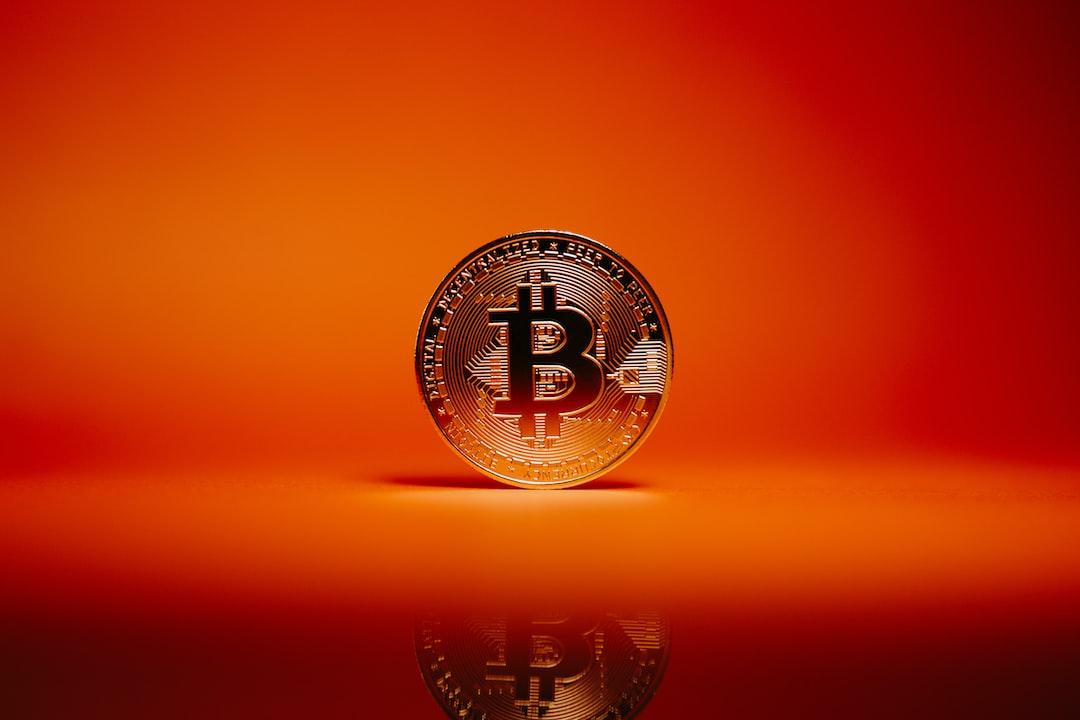Does the prediction market need Web3?
Author: Sid, IOSG Ventures. Special thanks to Aravind Menon for his insights.
(Previous information:
IOSG Ventures: Analysis of EigenLayer’s Reshaping Re-staking Model and Returns
)
(Supplemental background:
Layer2 in the eyes of investment institutions》IOSG founder Jocy: My thoughts on the current L2 situation
)
Table of Contents
Life cycle of a bet
Belief
Betting
Outcome
Does the prediction market need Web3?
Event/Game creation
Creator demand
Counterparty
Ensuring settlement
Ensuring no manipulation
Existing applications of success and failure
Investopedia states, “A prediction market is a market where people can trade contracts based on the outcome of future unknown events.” Essentially, it is a betting/gambling market. To better understand the betting market, let’s break down the life cycle of a bet:

In the belief stage, a prediction is just a viewpoint. When someone turns their viewpoint into a bet by investing money, they can earn a return when the outcome supports that belief.
Beliefs are formed through the interaction of various complex factors such as cognition, social, emotional, and environmental. Viewpoints can arise from immediate beliefs or thoughtful considerations, and they are more freely given because there is no monetary loss for expressing a viewpoint.

Betting
There are two scenarios for the creation of bets:
Wanting to profit from one’s belief
Having an attractive outcome unrelated to one’s belief
The first type of bet may come from a calculated viewpoint, while the second type comes from an attitude of “small bet, big win.”
To make any contract successful, there needs to be a party on both sides:
You bet $50 on Chelsea winning a match, and there needs to be someone (or many people) willing to collectively bet $50 on Chelsea losing (assuming the odds are 50/50).
In margin trading on GMX, a trader opens a long position, and GLP is the counterparty.
In casino games like roulette or blackjack, there is a “house” as the counterparty.
Sometimes, to attract the counterparty’s participation, we need to take some incentive measures because the outcome of an event is not always equally likely. These incentives can come in various forms, such as odds, bond curves in AMMs (Automated Market Makers), or funding rates in perpetual/margin trading platforms.
The structural design of market predictions becomes more complex when focusing on specific types of outcomes. Sports betting, for example, requires unique odds settings because almost no two events will have nearly identical outcomes. Additionally, each major event (e.g., the outcome of a league championship) may involve many smaller events (the outcome of each match), further increasing complexity.
In predictive events, proper execution of contracts is also necessary. What if your counterparty refuses to pay? That’s why derivatives are essentially legally enforceable contracts. On the blockchain, contracts can be executed trustlessly based on the outcome.
Therefore, to make bets, we need:
The occurrence (or non-occurrence) of events and the release of contracts for those events/games.
Ensuring enough participants have opinions on these events (creator demand: market participants provide market orders).
Ensuring these participants have counterparty (taker demand: market participants execute existing market orders).
Ensuring settlement.
Ensuring no market manipulation.
“Gambling games promote ‘illusion of control,’ whereby gamblers believe they can exert skill over outcomes that are actually defined by chance.” – Dr. Luke Clark

Outcome is the end of the event bet. Once the outcome is determined, the bet is completed.
Let’s look at the necessity of Web3 based on the criteria mentioned above for establishing a gambling market:
Apart from permissionless posting of events, there is no clear blockchain use case here. Permissionless posting is a flaw rather than a feature because it creates high redundancy for the same event, worsening the experience for bettors. Bet creation can be based on an event or can establish games like roulette or blackjack on-chain. (Permissionless posting refers to anyone being able to post information or transactions without centralized censorship or permission)
Events can also be price discovery. We see on Aevo prediction markets for unreleased tokens, which provide a good indicator of market sentiment towards token prices.
Parcl is also establishing a prediction market for better price discovery in real estate. It provides homeowners with a rough estimate of their property value and offers buyers looking to purchase real estate in a certain city a budget range.
Price discovery use cases are also a function of liquidity in event contracts, which is why the next section is important.
Blockchain cannot control creator demand, which is entirely driven by built-in market marketing or game mechanics.
Companies focusing on price discovery must strive to generate as much trading volume from creators as possible to obtain the most accurate prices for specific assets.
Now we enter an interesting topic. It is possible to incentivize counterparty betting by offering attractive odds, especially when the outcome is almost certain. In the image below, it can be seen that due to large mismatches in the Polymarket order book, it is possible to win $200 with a $0.50 bet.
One way is to create independent markets, executed on Balancer AMMs, like Augur Turbo. LPs (liquidity providers) here act as counterparties for different markets. While this structure avoids excessive reliance on odds calculation (or retrieval), it makes the experience of releasing prediction events worse.
For order book-based price discovery like Aevo, if there is no liquidity, the platform may have to act as the counterparty itself. This is not ideal, especially in cases where the bottom of the market is unknown.
Another approach is to create counterparty LP pools, like “The House,” as seen in protocols like Azuro and WINR. There is a liquidity pool that acts as the counterparty to bettors. Parcl has a USDC liquidity pool that acts as the counterparty for traders betting on long or short positions in real estate prices in different cities.
Both of these protocols have shown their effectiveness:

Azuro’s revenue generated by LPs on Polygon (Source: Dune)
The value of WINR’s LP token (WLP) has increased from $1 to approximately $1.27 (indicating a 27% return if LP started around July 1, 2023) (Source: Dune)
These models demonstrate some good product-market fit, where the front-end only needs to focus on bettors placing bets on the platform without managing order books or making trade-offs from AMMs.
You can think of these models as Uniswap v4, with different front-ends utilizing underlying liquidity (similar to hooks).
The WINR protocol has a betting frontend and a separate margin trading protocol that offers leverage of up to 1000x, ensuring high pool utilization but potentially risky for the pool.
Once the event is completed, settlement of the bets is required. In the AMM structure, everything is on-chain and settled on the contract. For the Polymarket order book model, the order book is maintained off-chain. Polymarket can block withdrawals if necessary. For front-ends like Azuro, similar to Bookmaker.xyz, no deposit is required. Each bet is treated as an independent transaction. The only off-chain components are the calculation of odds and data sources.
If there is a centralized data provider, and this data source is manipulated by the provider, it can have adverse effects on the outcomes for market makers and takers. This is one of the main reasons why most Web3 prediction markets use oracle systems like Chainlink.
The use of oracles involves a trade-off between delay and data integrity. When choosing an oracle, platforms can choose between first-party and third-party oracles, which involves a trade-off in delay. In rapidly evolving events, the presence of delay is a significant influencing factor.
In gambling games, the completeness of randomness is crucial, and its fairness should not be affected by its source.
Chainlink and other oracles like Supra and Pyth attempt to minimize the possibility of manipulation through aggregation, but in broad markets, the authenticity and reliability of data sources remain an issue. These oracle systems strive to provide reliability by aggregating multiple data sources, reducing the risk of a single point of failure, thereby protecting the market from improper manipulation. However, ensuring the authenticity of data sources and preventing manipulation remains a persistent challenge in prediction markets.

When we compare the cryptocurrency market to the prediction market, a successful example is the use of cryptocurrencies as assets for betting on platforms like Stake.com and Rollbit.

While applications like Polymarket have achieved some success, it is not a platform that can maintain consistent trading volume due to a significant gap between the event environment and the platform.

The product-market fit (PMF) between cryptocurrencies and the prediction market has been demonstrated in “House” pool systems like Azuro and WINR. A clear application scenario is where new front-ends focused on specific types of prediction markets only need to focus on demand. They can leverage systems like Azuro and WINR, which, in turn, provide top-tier returns for stablecoin holders (calculated at current rates, an annualized return of 40-60%).
In most countries, regulation for gambling applications and online casinos is very strict. Protocols like Azuro and WINR may also face lower regulatory pressure compared to companies like Rollbit.
The level of participation in the cryptocurrency market depends on the level of participation in the front-end. There is currently no fully permissionless and trustless crypto prediction market.
What we expect to see is the potential success of applications like Parcl, which brings transparency to a relatively illiquid asset class. From a fundamental standpoint, it seems to have the right structure to achieve its price discovery goals.
The main use cases for Web3 include the establishment of counterparty pool structures that support the construction of various prediction markets and the successful application of prediction markets for better price discovery.
With the growing cryptocurrency market capitalization and more people having disposable capital on-chain, the prediction market industry can be profitable or at least useful.

Related Reports
Is it crowdsourcing or illegal gambling? Analyzing the nature of Polymarket’s presidential prediction market (Part 1)
Is it crowdsourcing or illegal gambling? Analyzing the nature of Polymarket’s presidential prediction market (Part 2)
Illegal gambling platform》Bitcoin spot ETF “15/15 before approval” reaches 85%! Polymarket dominates with a trading volume of over $2.5 million.


